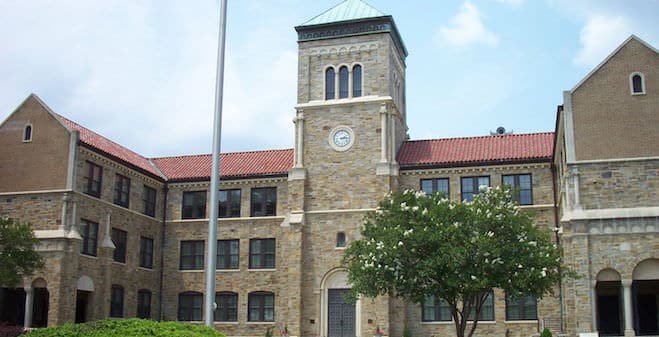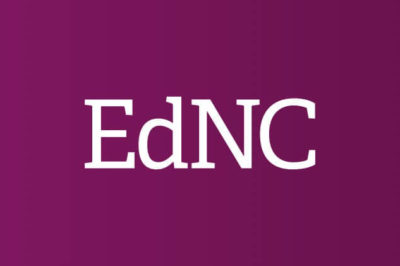
This article was originally published at the Civitas Institute on October 14, 2015. It is reprinted with the author’s permission.
In June, Wake County commissioners approved an extra $44.6 million for Wake County Public Schools (WCPSS). About half the money will go for raises and additional pay; $16 million for teacher pay, $1.8 million for teachers who take on extra duties, and another $6 million for 3 percent raises for support staff.
Last week, WCPSS revealed a new salary schedule that ensures all teachers and most staff get raises this year. The raises for classroom teachers would range from $875 to $3,202, depending upon years of experience. As you can see from the attached schedules, some raises could reach as high as 25 percent.
A review of employee salary data shows WCPSS has approximately 19,100 employees. That includes 9,937 full-time teachers, approximately 5,700 full-time non-teaching staff, and 3,400 part-time teachers and other personnel.
In 2014-15, the average salary for a full-time WCPSS teacher was $49,532.

What does teacher pay look like in Wake County Public Schools? Graph 1, using district data, illustrates teacher pay by salary range along with the number of teachers in each category. The abnormal salary distribution is immediately noticeable. More than half (52 percent) of the teachers in Wake County earn between $40K and $50K. Moreover, about a third (32 percent) of WCPSS teachers earned between $50K and $60K, and about 14 percent of full-time teachers earned $60K or more. On the other end of the spectrum, only about 1 percent (133 teachers) of full-time teachers earned less than $40K.
Teacher salaries have been a prominent issue this past year. There was plenty of public discussion about teachers struggling on $30 or $35K. According to the data, the claims didn’t seem relevant for WCPSS. Yes, while there were some teachers paid below $40,000, it looks like the overwhelming majority of teachers start their careers in the $40K salary ranges. Obviously, Gov. Pat McCory’s plan to improve starting teacher salaries contributed to the higher salaries, as did the supplemental pay ($5,994) that Wake County pays to teachers.
It’s also interesting to note approximately 40 percent of full-time teachers earning between $40K and $50K earn about $40,162. Considering the sheer number (1,996) of full-time teachers earning that amount, my guess is the amount reflects WCPSS starting salary.
The new salary schedules for teachers include significant percentage increases to ensure WCPSS teachers are on a path to reach the national average ($56,000).
However, is tagging salaries to a national average a good idea? There are several reasons that suggest the answer is no. The national average fails to reflect any variations in the cost of living. Because it costs significantly more to live in New York City or San Francisco than, say Winston-Salem or Wilmington, it is not an accurate reflection to compare the salaries of teachers in these differing areas when a dollar goes much further in one city compared to another.
Second, a national average also fails to take into consideration how schools are financed (i.e., through the property tax or state tax appropriations) or the composition of teacher work force. A growing state like North Carolina is apt to have younger teachers than an older state with a stable or declining population. Those factors are apt to impact average salaries in ways that aren’t immediately evident when using a single number, as starting teachers will naturally bring the overall average down while more experienced teachers do the opposite.
Thirdly, there has been much discussion about stagnant teacher salaries the last few years. Much of the downward pressure on salaries is tied to the overall poor performance of the state and national economies. As tax revenue declined, the funding pool for teacher salaries likewise dropped.
Fourth, the cost of employee benefits has been sadly missing from most discussions on teacher pay. This past year North Carolina paid nearly $2 billion in employee benefits. That number has nearly doubled in the past five years.
The state and national economies along with the rapidly rising rates for retirement contributions and hospitalization are significant factors impacting the real cost of teacher raises. In 2014-15, an average teacher in North Carolina made $43,426 in salary. In addition, that average teacher received $3,152 worth of Social Security contributions (approximately 7.65 percent of salary), $6,605 in retirement contributions (15.21 percent of salary), and $5,738 for hospitalization benefits. All told that’s $15,321 in benefits that are added to a $43,426 salary. Thus the average employee is really a $58,747 employee.
Since Wake County teachers earn even more than the average state salary, those figures are even higher in WCPSS.
Nor is the increasing cost of benefits abating. Next year, to look at just one area, the percentage the state pays for retirement contribution will increase from 15.21 percent to 15.32 percent of employee payroll. Likewise the payment the state makes per insuree for hospitalization will also increase from $5,378 to $5,471 per employee. Those costs must all be added in by the state when considering salary increases.
Wake County teachers deserve a salary structure that treats them fairly. However the best way to improve teacher pay is to not to tag on healthy percentages onto outdated pay schedules based on years of experience. Does anyone really believe that the more than 5,000 teachers earning between $40K-$50K all perform at essentially the same level? If we don’t, why does WCPSS pay them the same salary?
Teacher pay continues to be an issue because our perceived solutions are divorced from reality. Teachers, like students, are different from one another. And, like every other profession, there are good and not-so-good teachers. Rigid adherence to salary schedules only makes teachers the victims of a pay system they thought was designed to protect them.
The WCPSS pay proposal does little but perpetuate the current problems regarding teacher pay. If WCPSS is truly serious about teacher pay, throw away the rigid salary schedules. Yes, I know they were revamped and schedules were compressed. The fact is, teacher salary schedules are still based on years of experience – not job performance. Such a system doesn’t work. It denies the reality that teachers are different. There are no incentives for excellence. The system also denies the reality of different markets. Isn’t the need for local salary supplements one of the best arguments against a one-size-fits-all salary schedule? Yet we don’t seem to learn.
WCPSS teachers deserve a salary structure that better reflects their actual performance. The WCPSS pay plan makes sure that doesn’t happen. It pays teachers — and other staff — largely according to years of experience and professional qualifications. Truth be told, neither of these factors is tied to student achievement, which the last time I checked was the end goal of teaching.
It’s disappointing that educators and WCPSS refuse to recognize these facts. The WCPSS proposal is not a pay plan; it’s a pay problem. And, we can only hope the district and the county commissioners realize that and come up with a compensation plan that treats teachers fairly yet leads to better outcomes for students.
Recommended reading



